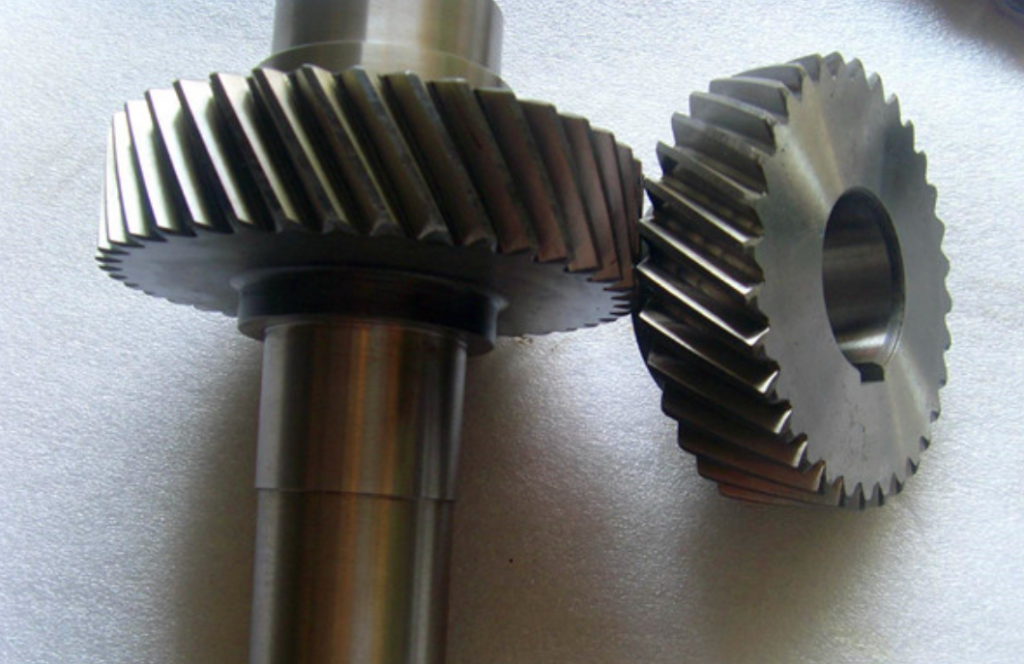In recent years, with the increasing concern about energy and environmental issues, electric vehicles (EVs) have gained significant attention due to their advantages of zero emissions and low noise. The development of EVs is advancing rapidly, and the high-speed gear transmission system in EVs plays a crucial role in determining the performance and comfort of the vehicle. However, the high-speed input of the reducer in EVs brings about many challenges, such as the increased vibration and noise of the gear transmission system. Therefore, it is of great significance to systematically study the vibration characteristics of the high-speed gear transmission in EVs.

Introduction
The traditional fuel vehicles have caused serious environmental pollution and relied heavily on fossil fuels. In contrast, EVs offer great potential in environmental protection and intelligentization. In recent years, EVs have entered the market on a large scale, and many countries have proposed timetables to phase out fuel vehicles. The sales of EVs in China have increased dramatically in recent years, making it the largest market worldwide.
The transmission system of a traditional fuel vehicle is usually composed of an engine, a clutch, a gearbox, a main reducer, and a differential. However, the transmission system of a pure electric vehicle is relatively simple, mainly including three schemes: motor central drive, in-wheel motor drive, and hub motor drive. Currently, the motor central drive scheme is the most widely used in pure electric vehicles, especially in passenger cars.
In the motor central drive scheme, the motor directly connects to the reducer, and the high-speed input of the reducer poses challenges to the strength and life of the gear transmission system. At the same time, the low noise of the electric motor makes the vibration and noise of the gear transmission more prominent in the overall vehicle noise. Therefore, studying the vibration characteristics of the high-speed gear transmission in EVs is crucial for improving the stability, comfort, and safety of the vehicle.
Literature Review
The vibration characteristics of gear transmission systems have been a research hotspot for many scholars. The main internal excitation factors that affect the vibration characteristics of gear transmission include meshing stiffness, meshing damping, impact, and clearance, while the external excitation factors include input torque fluctuation, gear mass eccentricity, load torque fluctuation, and time-varying bearing stiffness. Among them, time-varying meshing stiffness and meshing impact are two important factors.
Currently, there are several methods for calculating the meshing stiffness of gears, including the material mechanics method, the finite element method, and the improved Loaded Tooth Contact Analysis (LTCA) method. The material mechanics method is simple but has low accuracy, while the finite element method has high accuracy but requires significant computational resources. The improved LTCA method is an efficient and accurate method for calculating the meshing stiffness.
The research on the vibration characteristics of gear transmission systems under the excitation of meshing impact is relatively limited. The calculation of the meshing impact force is mainly based on theoretical models, and there is a need for more accurate calculation methods and experimental verification.
In addition, the research on the vibration characteristics of gear transmission systems usually considers a single factor or a few factors, and there is a lack of comprehensive consideration of various internal and external excitation factors. The study of the vibration characteristics of multi-stage gear systems and the interaction between different gear pairs is also relatively scarce.
Research Content and Methods
This paper takes the high-speed helical gear transmission of an electric vehicle reducer as the research object. The main research contents include:
- Calculating the time-varying meshing stiffness of the helical gear using the material mechanics method, the finite element method, and the improved LTCA method, and comparing the results of these methods.
- Analyzing and calculating the meshing impact of the helical gear, including determining the position of the out-of-line meshing point, calculating the meshing impact velocity and the amplitude of the meshing impact force, and obtaining the meshing impact force curve.
- Establishing a bending-torsion-shaft coupling dynamics model of the single-stage helical gear transmission, and studying the vibration characteristics of the single-stage helical gear transmission under the excitation of time-varying meshing stiffness, meshing impact, and both combined.
- Establishing a dynamics model of the two-stage helical gear transmission, and analyzing the vibration characteristics of the two-stage helical gear transmission under different excitations, as well as the interaction between the two gear pairs.
- Studying the effect of tooth surface modification on the vibration characteristics of the high-speed helical gear transmission, including the design of tooth surface modification, the calculation of the loaded transmission error and the time-varying meshing stiffness after modification, and the comparison of the vibration reduction effects of different modification forms.
